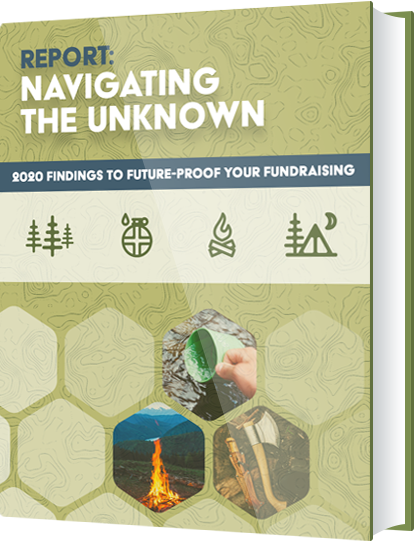In case you haven’t heard, we recently launched our newest report. It’s called “Navigating the Unknown: 2020 Findings to Future-Proof Your Fundraising,” and it examines how the COVID-19 pandemic impacted the nonprofit industry in 2020. It’s full of data-backed fundraising strategies for engaging with donors during difficult times, including tips for fundraising during times of uncertainty.
Hard times happen! Nonprofits need to be prepared to communicate (and fundraise!) during difficult times. Knowing how to approach donor communications during a crisis is tough, but we can help.
How do you communicate and raise money during hard times? Here are three important steps!
First, figure out what’s appropriate
Different crises require different responses. First, your nonprofit’s leadership and board members should determine whether communicating and fundraising is appropriate. If you have a crisis communication plan, this is its time to shine! (Psst: wanna learn more about crisis communication plans? Check out the first section of this article over here.)
Your crisis communication plan will guide you through how to communicate based on the situation at hand. Take a look at what’s going on and decide which parts of your plan to use. What’s happening? Are you responding to a:
- Global or widespread situation, like a pandemic or a national/global conversation?
- Regional situation, like a natural disaster or widespread unrest?
- Local situation, like local scandals or leadership change?
The first step to communicating and fundraising during a difficult time is getting a firm grasp on what kind of situation you’re handling and what’s appropriate for the circumstances. Then, use your crisis communication plan to guide your conversations and appeals.
Make sure your communications are mission-centered
Donors let us know that the appeals that inspired them most in 2020 were mission-focused, not crisis-focused. In real life, that looked like appeals that asked donors to give in support of their work instead of asking them to give to support the nonprofit through the pandemic.
There’s a fine line between keeping your communications and appeals mission-focused and coming off as out of touch with reality. If it’s necessary (remember, check your crisis communications plan!), talk about how the situation at hand is affecting your nonprofit. Here are some examples to help you visualize what that look like:
Weaker: “The pandemic is affecting everyone, including our organization. As Lakeland copes with this month’s shutdowns, we need your help more than ever. Please donate at the link below to support Lakeland Food Pantry through this unprecedented crisis.”
Stronger: “Everyone’s feeling the squeeze of the shutdown, which means a growing number of parents are turning to Lakeland Food Pantry to feed their families. Will you help? Donate at the link below and make sure local families stay safe and healthy!”
While you plan your appeals and communications, remember this: people give to other people. They don’t give to organizations. Focus on how donors will help real-life people! Feel free to allude to the situation at hand, but don’t let the crisis distract from your mission.
Make sure you prioritize relaying donors’ impact
One of the best ways to minimize the impact of a crisis is building a donor base that loyally supports you. Finding new donors during a tough time is hard! It’s much easier to turn to a group of donors who are already familiar with your mission and are invested in your work.
Retaining donors is critical! And the best way to retain donors is to show them their impact and make them feel amazing about supporting your work. If you want to build a donor base that will sustain you in the future, it’s important that your donors know how their support makes a difference now.
I often use the analogy of giving a relative money: imagine your nephew asks you for some money to get through a tight spot in college. You give him $100, and he sends you a thoughtful thank-you note. Later, your nephew tells you that he used that money to pay for one of his textbooks and lets you know what he’s been studying. How would you feel about giving him additional support in the future? You’d probably be much more likely to give him extra money in the future because you know he used your money responsibly in the past.
If your donors know you’ve used their money wisely in the past, they’ll be much more likely to support you in the future, even if you’re going through a difficult time.
Conclusion
Fundraising during a time of crisis or uncertainty is tough. But having a good communication plan in place, keeping your mission at the center of all your communications and appeals, and proactively building a loyal donor base you can depend upon will all help. Learn more about these fundraising strategies for nonprofits (and tons of others!) by downloading the full report, “Navigating the Unknown: 2020 Findings to Future-Proof Your Fundraising.”








